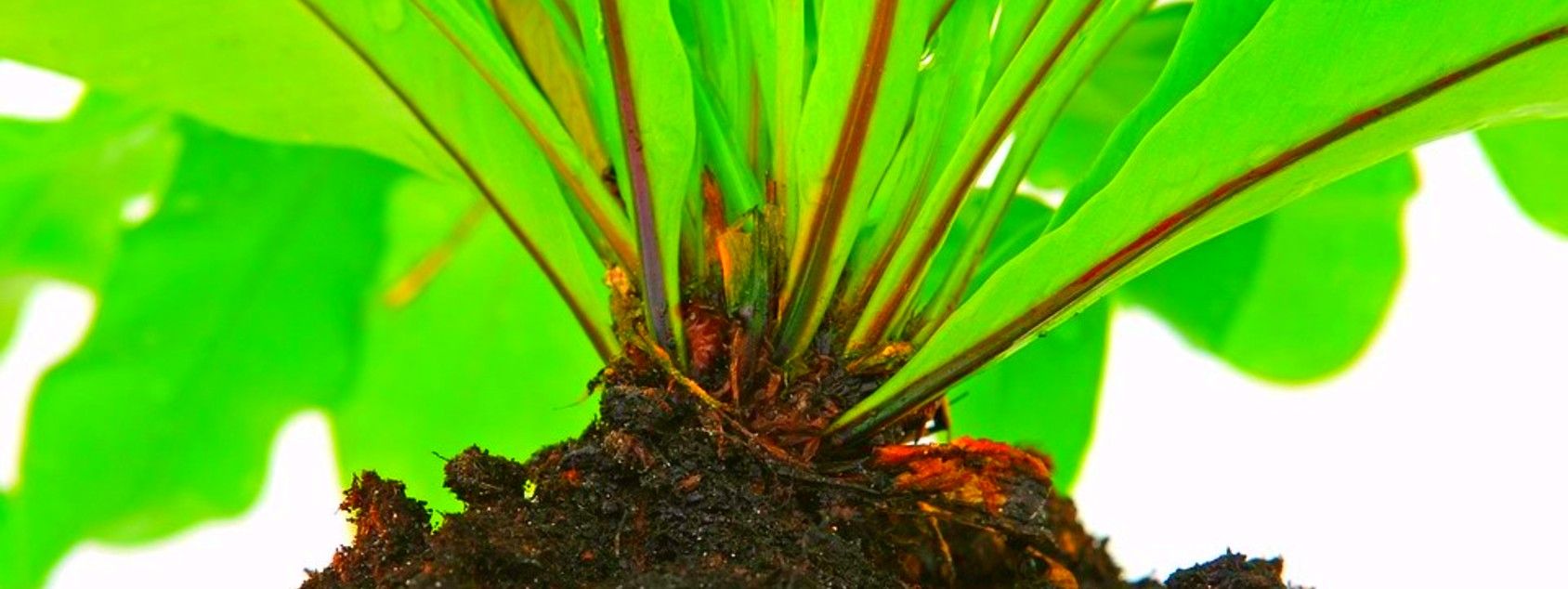Plants are made-up of many components which each play an important role in the plants’ functioning. The part with the most important role of all is the leaf. This is where the core of the plants defensive and growth systems are initiated. Every single plant leaf is like a miniature solar panel. Capturing light and using it to convert carbon dioxide and water into oxygen and sugar, this is photosynthesis. These simple sugars acquired by the leaves form the building block of plants. Plants not only need sugars to thrive, but they also need nutrients like nitrogen and potassium…So how do they obtain these vital elements?
The answer can be summed up using 2 words, soil and roots. Plants use root systems to obtain nutrients from the soil. Roots provide a surface which allows for the exchange of nutrients to occur. However, due to their lack of mobility, plant roots are limited in the amount of nutrients which they can take up from the soil. In order to overcome this, they negotiate and employ a variety of biological allies for assistance. This negotiation occurs in the area of the soil around the root hairs which is called the rhizosphere. It is here that an ingenious trade-off occurs between the plant roots and the organisms within the soil. But, what do the plant roots exchange in order to obtain these nutrients from the soil organisms?
Well, some of the sugars that the plant produces during photosynthesis are released from the root hairs into the rhizosphere. These sugary compounds are called root exudates. You might think that releasing some of your hard earned sugar is a waste of energy, but the plant is actually creating its own work and defensive force, a mass of tiny organisms. They supply the plant with nutrients that would have otherwise been out of reach and unobtainable. Soil organisms like bacteria establish around the rhizosphere and as the plant produces more exudates, the bacteria feed and multiply in the rich sugary environment. As these organisms multiply around the roots they form a protective barrier against pathogens, whilst at the same time excreting waste that is rich in essential available plant nutrients.
So, are these root exudates only effective and beneficial to the organisms in or around the rhizosphere? No, and this is where fungi come in. Long dense filaments of fungal hyphae also work in a mutual relationship with the plant roots. Unlike bacteria, however, they are particularly good at extracting plant available nutrients over a large surface area and will also trade them in return for the sugary exudates released from the roots. These fungal hyphae form massive underground networks connecting multiple plants and providing them access to a vast range of nutrients.
This incredible mutual relationship between bacteria, fungi and plants has shaped the evolution of the soil and forms the bases of the soil food web. Without these fundamental organisms, the soil food web collapses, having massive implications for life above ground. Many modern farming practices are detrimental to this web, but if we can learn to work with it, and implement sustainable practices, we can foster long term solutions to enable global food security.
- The management of soils with excessive sodium and magnesium levels - 2023-06-12
- Understanding evapotranspiration better - 2021-10-18
- Soil fungi connections - 2021-09-28

